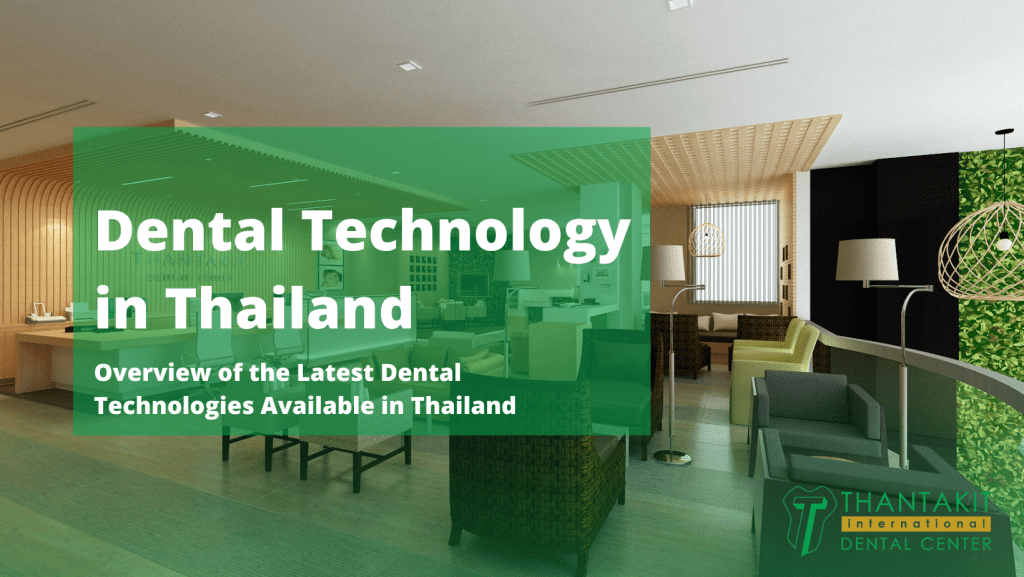Dental technology in Thailand: An overview of the latest dental technologies available in Thailand, including digital dentistry, 3D printing, and other advanced techniques.
Thailand is known as the Land of Smiles for good reason. Many of its dental hospitals, centers, clinics, and schools have access to state-of-the-art technology in the realm of dentistry.
In turn, many foreigners depend on dental tourism in Thailand to get affordable dental care. Thailand in particular offers one of the most advanced levels of healthcare and dental care in Asia or even the world with its international-level tech and world-class specialists.
Let’s now discuss the different dental technology in Thailand you can avail of.
Page Contents
What’s Digital Dentistry in Thailand?
Digital dentistry is available in Thailand as advanced dental technology, but what is it exactly? Digital dentistry is when dentists use digital technology like computers, scanners, software, and 3D printers to assist in dental restoration, orthodontics, or cosmetics.
There are advantages you can derive from digital dentistry, such as how it inspires patient confidence and trust.
In Thailand dentistry terms, their dental tourism packages are so modern yet so competitively affordable even when taking travel expenses into account that most patients feel comfortable entrusting their dental health in the hands of Thai digital dentistry.
3D digital scans also assist patients in modifying their treatment before it is done while also guiding dentists towards the best possible results. Improve your dental future today with this state-of-the-art tech!
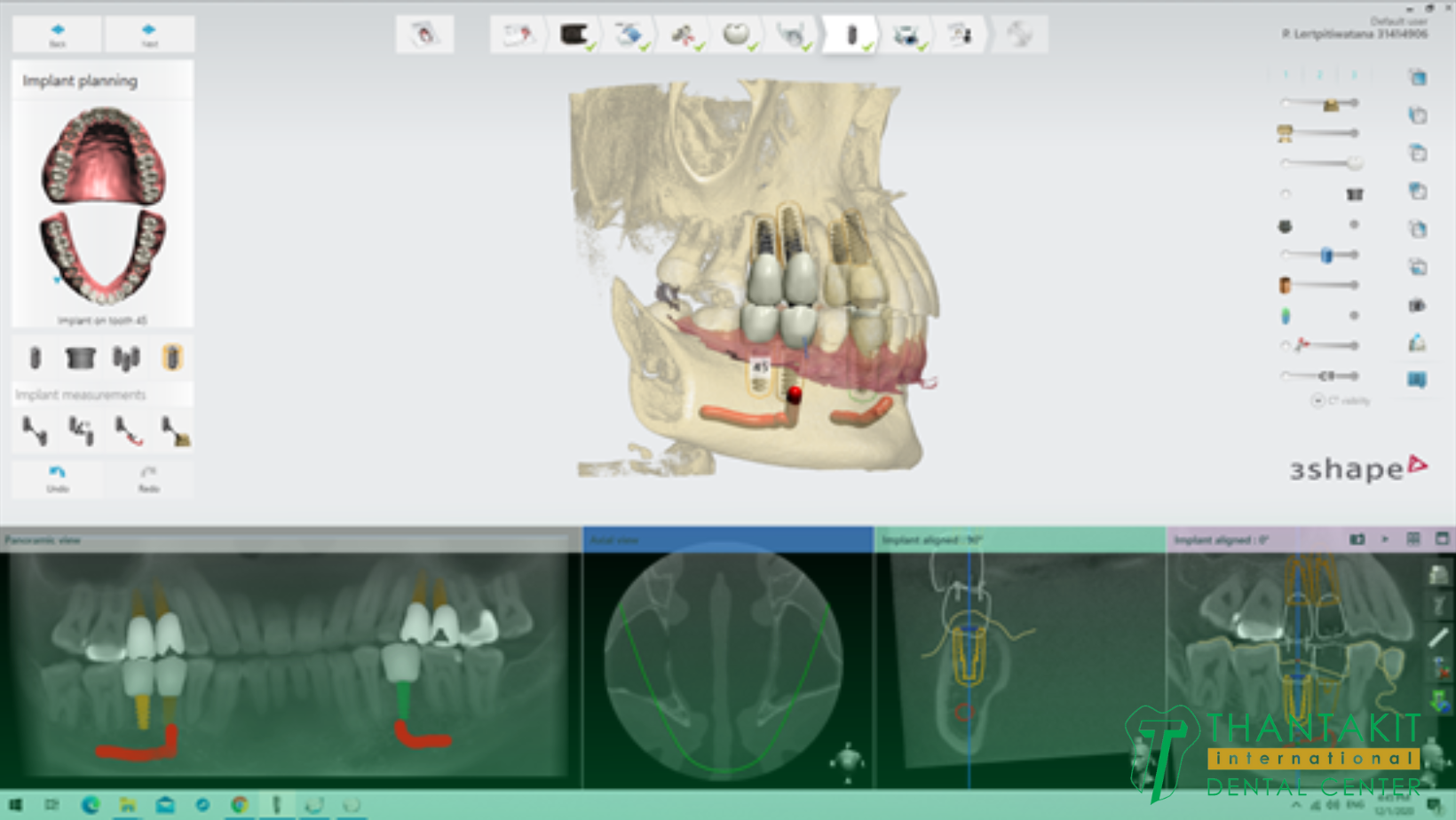
Dental Molds versus Digital Scans
Certain Thailand dental centers and clinics also still use dental molds to make dental crowns, bridges, veneers, inlays/onlays, or dentures as well as dental implants, night guards, orthodontics, and so forth.
However, there’s less contact involved when using a digital scanner compared to a dental mold or even a traditional X-ray (the less exposure to radiation the better).
Using digital dental technology in Thailand also appeals to supporters of Thailand’s hugely successful dental tourism industry because it improves the efficiency of the restoration and decreases costs significantly.
According to 2015 market research from David Guichet, 66 percent of doctors considered purchasing scanners to digitize their dental impressions within 2016 (the year after the date of the study).
In 2022, it’s hard to imagine any Thailand dentist office without such advancements. The most technologically advanced Thai dental centers and hospitals have even gone completely digital.
They currently offer intra-oral scanning and CAD/CAM (Computer-Aided Design or Manufacturing) digital solutions.
Scanning Equipment in Thailand Digital Dentistry
You can classify Thai dentistry digital scanners into several categories depending on how and where they’re used—in dental centers while facing the patient or in dental laboratories that don’t face the patient.
Dental scanners are also either CBCT or intra-oral scanners.
- CBCT: Dental Cone Beam CT (CBCT) scanners are utilized for taking mouth area X-rays. It uses the beam to scan beyond the mouth and gum surface, particularly the jawbone and teeth roots along with the teeth.
-
Intra-Oral: Intra-oral or intraoral scanners are 3D dental scanners that create a digital 3D impression of the inside of your mouth. It works hand-in-hand with CAD/CAM apps and 3D printing through the digital workflow.
According to the Guichet study, digital dental processes such as oral impression or intra-oral scanning and their accompanying software improve the restorations’ aesthetic and functional qualities.
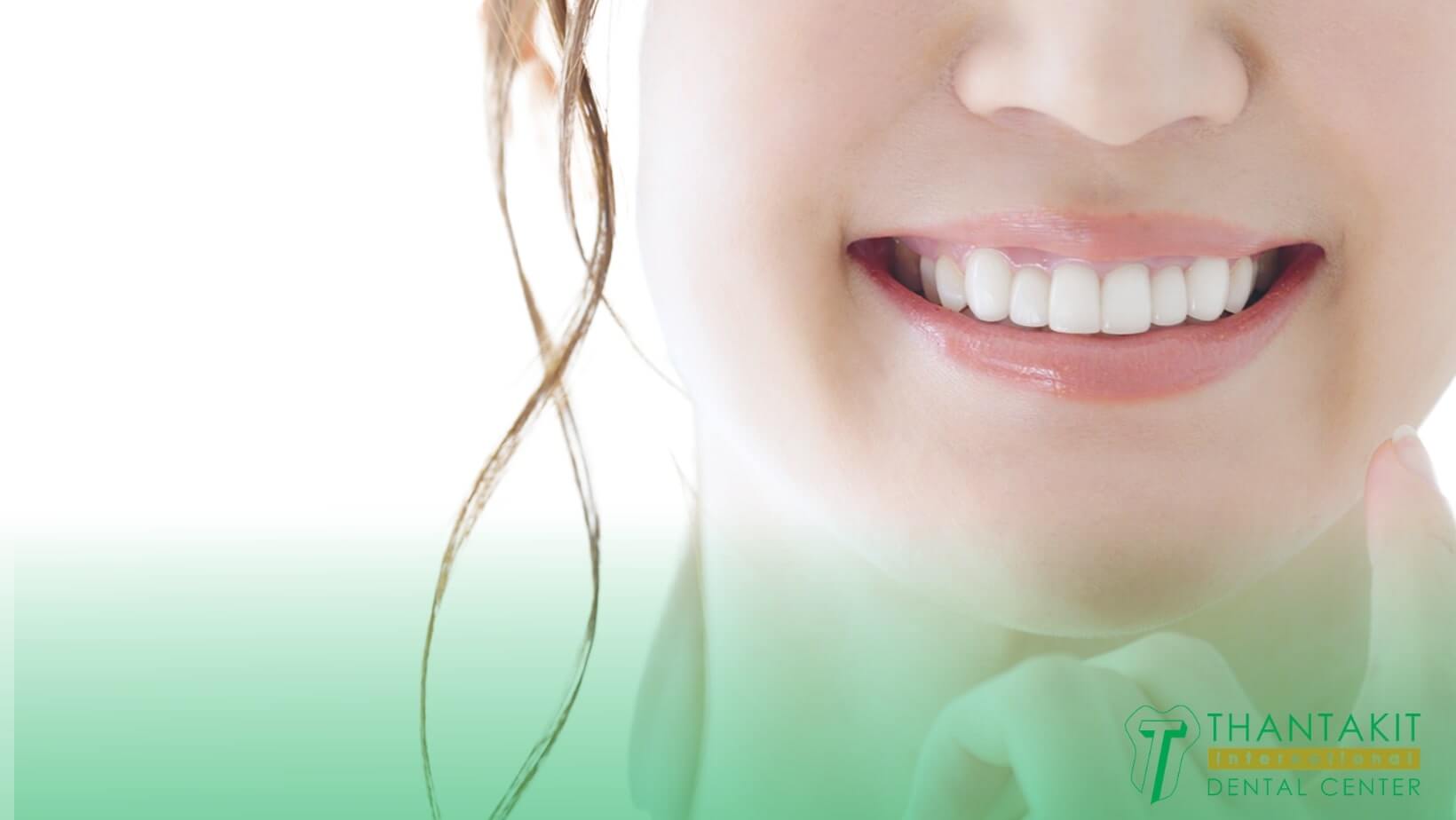
3D Intra-Oral Scanners
The 3D intra-oral scanner mostly replaces conventional mold or impression methods using gooey material put inside the mouth to make a mold of it. Many major dental clinics and centers in Thailand make use of them along with CBCT scanners.
The two scanning equipment types can be combined together for the sake of making a full denture for the patient as well.
- Polygonal and 3D Visualization: The scanned digital imagery from an intra-oral scanner is built up with polygons and can be combined with an image taken by an intra-oral camera to create a realistic 3D image of the dentition of the patient.
- Early Dental Caries Detection: Some scanners take detailed topography scans of the enamel surface of your teeth. They enable the dentist to see in detail the tiniest defects with the teeth that they can’t see with the naked eye.
Dental Laboratory Scanners
Dental lab scanners also scan the physical space of your mouth, represented by a polygonal 3D image. However, they’re more like dental models rather than physical impressions for editing or manipulation.
- Dental Lab Scanners: The dental lab scanners scan info that’s processed, corrected, and customized with lab computers using CAD software to allow for the manufacturing of dental restorations by CAM.
- App Access for the Data: The 3D data from the scans can be accessed by a tablet or a computer screen. This data can help tremendously in designing custom restorations for the patient.
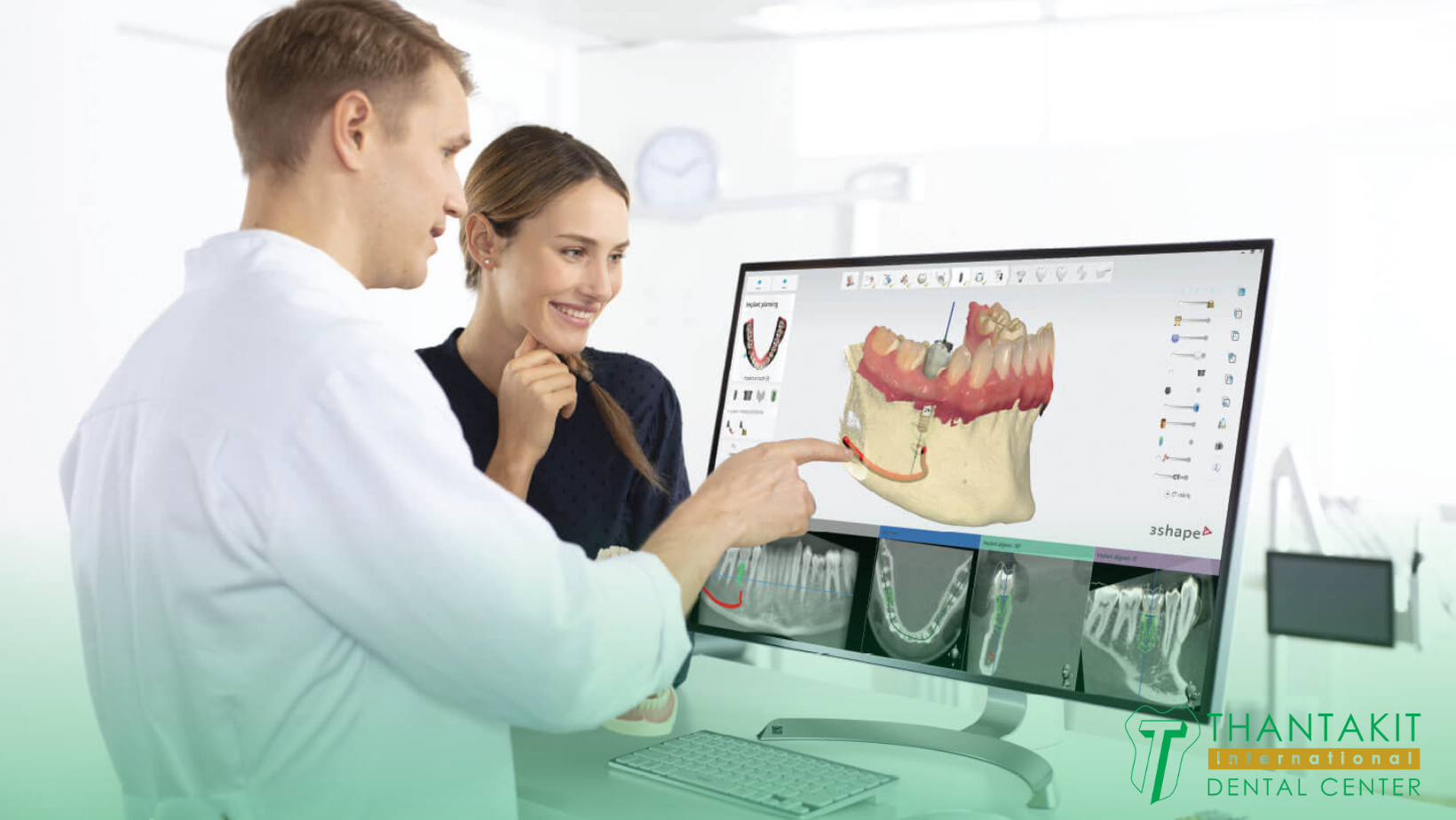
CAD/CAM in Thailand Digital Dentistry
Many Thailand dental centers have also adopted CAD and CAM solutions as part of their services, particularly in tandem with their digital intra-oral scanners.
- CAD: Computer-aided design tech refers to computer-based designing programs or apps used to create simulations or render data from scans in a polygonal way for dental diagnosis and treatment.
-
CAM: Computer-aided manufacturing specifically refers to dentistry software and hardware (3D printers or milling machines) solutions that enable the dental lab to manufacture tooth restorations designed by CAD apps.
The CAD/CAM process includes everything from intra-oral scans to making a digital dental design proposal for restorations like veneers or crowns, to milling or 3D printing (manufacturing), to implementation into the mouth by the Thai dentist.
In fact, some Thailand dental clinics and centers can do same-day crowns or all-on-4 dental implants with the assistance of CAD/CAM technology. They can turn a multi-visit process into a single-visit treatment.
There are many benefits from going the CAD/CAM dentistry route.
- Makes Life Easier: Digital solutions such as scanning and editing the dental design on a tablet or computer at the lab can make the treatment cheaper, faster, and more accurate while decreasing the wait time of the patient.
- Multiple Applications: CAD/CAM tech is used by multiple dental professionals such as specialists or general practitioners as well as lab technicians who construct the prostheses or restorations used to fix your dental issues.
- Dental Design: Creating the dental design of your dentures or crowns used to take weeks or months. They’re even milled in-office to better fit your mouth’s surface. The increased accuracy of 3D scanning allows for a faster and more precise outcome.
- Treatment Planning is Easier: Instead of readjusting at every step of the way, you can plan out the treatment from the start on the digital simulation level, allowing for an immediately satisfying or adjustable result in one visit with zero errors.
-
Additional Flexibility: The patient can send feedback to the dentist in assessing the kind of restoration he’ll get, thus there’s less of a need to modify the prostheses down the line because of a poor fit thanks to digital technology.
The intra-oral scan of your mouth sets up an accurate basis for the rest of the CAD/CAM workflow. It’s arguably even more precise than making a painstaking mold of your mouth. Software nowadays has become quite advanced, smart, and adaptable.
The Cost of 3D Digital Dentistry in Thailand
The digital dental technologies available for Thai dental centers, clinics, or laboratories have a wide range of applications. They include services such as 3D printing or milling, imaging, scanning, and digital design via CAD/CAM.
- Complementing Digital Technologies: These technologies were developed individually but ended up complementing one another under one digital dentistry umbrella.
- Examples of Thai Dental Scanning Tech: The dental technology in Thailand dental centers like Thantakit include services like the 3D CT scan for ฿5,000 to ฿10,000 ($144 to $287), Full Mouth Panoramic Scan for ฿1,200 ($34), and Periapical or Bitewing X-Rays for ฿300 ($9).
- CAD/CAM Tech in Thailand: You can even avail of the Intra-Oral Digital Scanner to manufacture a CAD/CAM Zirconia Crown (with a 2-year warranty included) for ฿25,000 ($717). Just keep in mind that the foreign exchange rate used at the time of this writing is subject to change.
- Digital Simulation and Adjustment: The computer program used for CAD also helps you make digital adjustments of the product in question to minimize the need of milling or sculpting the dental prosthetics later on.
- 3D Printing of Dental Products: 3D CAM printing also exists for you to print out the custom-fit dental appliance or prosthetics like veneers and crowns instead of milling or manufacturing them from an oral mold.
Long story short, Thailand dental tourism have affordable and advanced 3D digital dentistry services readily available to better entice their tourist customers to avail of them.
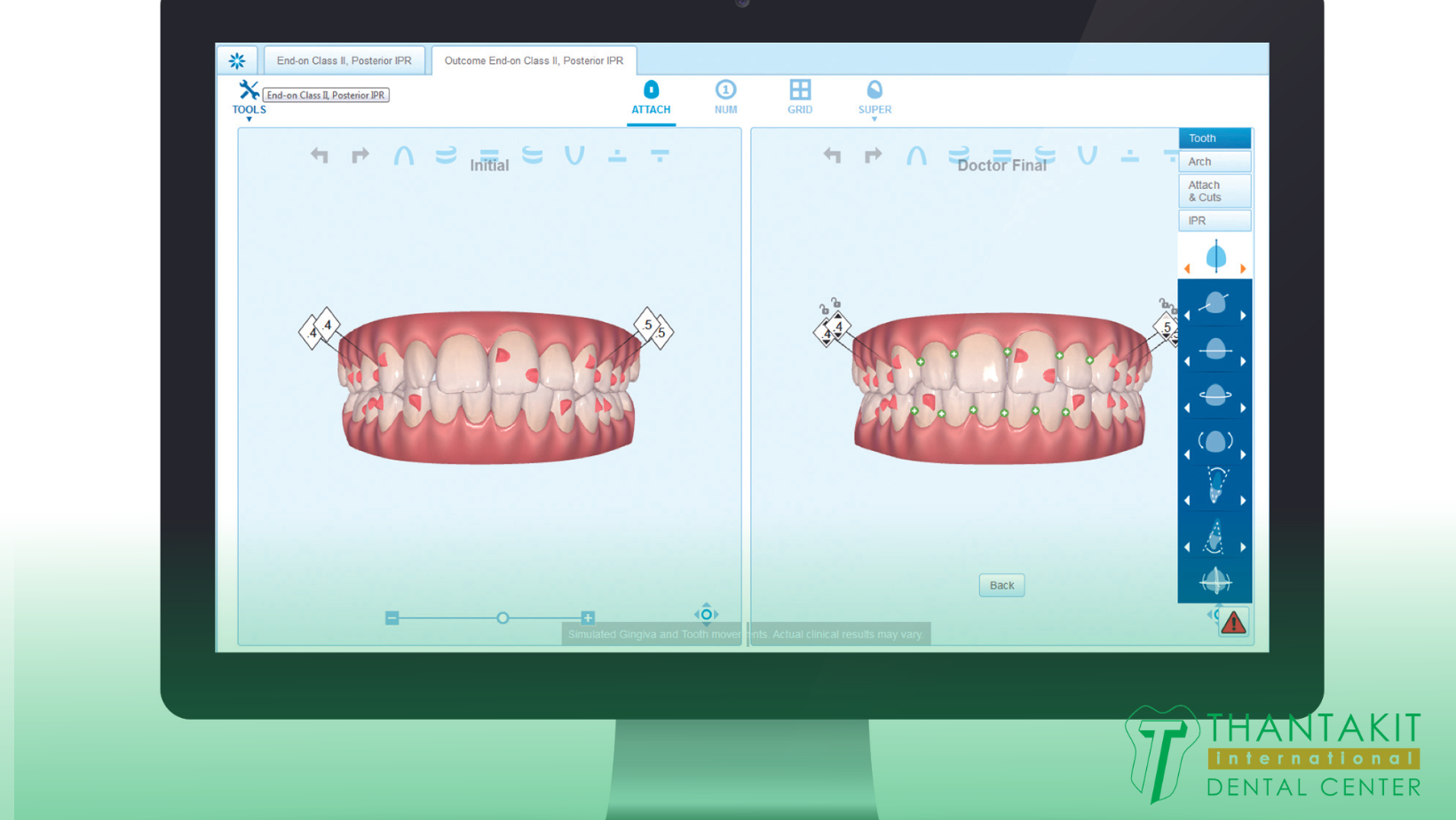
What is a Digital Workflow in Thai Dentistry?
A dental center’s digital workflow will vary on a case-by-case basis. It depends on the dental issue, the complexity of solving it, any complicating factors, and the type of treatment required. However, the fact that it’s digital gives Thailand dentists the competitive edge.
The advanced digital technology present in the best Thailand dental centers and hospitals ensures better speed, automation, precision, and integration between disciplines.
Their digital workflow breaks down the invisible wall between dentists and lab technicians. They share the same digital solutions so there’s less of a bottleneck in processing treatment paraphernalia. This can then result in single-visit treatments with short turnarounds.
For example, a digital workflow for making custom dentures for a patient can be handled in a single dental center, wherein the doctor takes a scan, plans the treatment, and so forth without sending data to a separate lab elsewhere in the city.
The Three Stages of Thailand Digital Dental Workflow
Regardless of treatment type or indication, the standard digital dental workflow using digital dental technology in Thailand involves the following three steps.
-
Scanning or Digital Impression Taking: This step is the only one the patient sees. A digital scanner is used to capture dentition instead of making an impression mold of it. Primitive scanning techniques manually scan multiple photos to create a 3D image
An intra-oral scan is the cleaner, more preferred method over using multiple photos or creating a mold from a gelatinous impression of your mouth, teeth, and bite.
A more advanced scanner acts more like a 3D CT scan that captures everything in one go to get the data instead of using individual scans of photos, plaster models, and so forth to do the same thing. It takes about 2-3 minutes to do the scan.
- Treatment Plans and Design: During this stage of the digital workflow, Thai dentists or dental specialists (like endodontists or orthodontists) use CAD/CAM apps to identify dental issues and design a proper dental restoration solution for them. Based on lab or patient feedback, the plan can be revised or refined ASAP.
-
Product Manufacturing: The product can be manufactured by either 3D printing with a 3D printer or by milling materials in a dental lab with a milling machine. The fit of the product is super accurate because of how detailed a 3D scan can be.
At this portion of the workflow, the patient can visit later to receive the treatment. If it’s synthesized the same day as the patient’s first visit, they only need to wait on the dental chair.
Digital Restorative Dentistry
You can also consider different restorations as dental technology in Thailand. From dental implants to crown restorations, they’re all considered part of the technologies you can avail of from Thailand dental tourism packages.
The dentist will be relying on good collaboration with the dental lab when it comes to teeth restoration and reconstruction. In most centers and hospitals, the lab is located in the same building as the clinic.
The dental lab can manufacture crowns, bridges, inlay/onlay, veneers, dentures, implants, splints, indirect bonding trays, aligners, retainers, and other restoration products for patient use.
Even if the patient is fully edentulous (all his teeth are missing), CAD/CAM software can predict and visualize the outcome of the treatment, allowing the patient to see the result and help do modifications according to personal preferences.
The data is then sent to a dental lab to allow for the design and manufacturing of the most anatomically correct, ergonomic, and suitable restorations possible.
Digital Orthodontic Treatment
The way Thailand dentists can fix teeth and/or jaws in the wrong position by correcting misaligned bite patterns with braces has improved significantly with the introduction of digital CAD/CAM technology.
Sure, the use of the panoramic X-ray remains a viable Thai orthodontic treatment option. Many centers in the country also still practice traditional methods of examining dental positions.
However, if you can afford digital scans technology, you can fast-track your orthodontic treatment.
On the other hand, there are some cases wherein both traditional and digital methods of scanning are used for better dental health results. That’s also an option.
A more “digital” workflow can aid orthodontics in the following applications:
- Bite correction
- Teeth growth correction
- Missing teeth restoration
- Moving and aligning crowded/spaced-out teeth
3D computer visualization specifically assists orthodontists in making a detailed model of the teeth and bites from multiple angles. This allows for better planning when laying out the braces, aligners, or other orthodontic appliances on the patient’s crooked teeth.
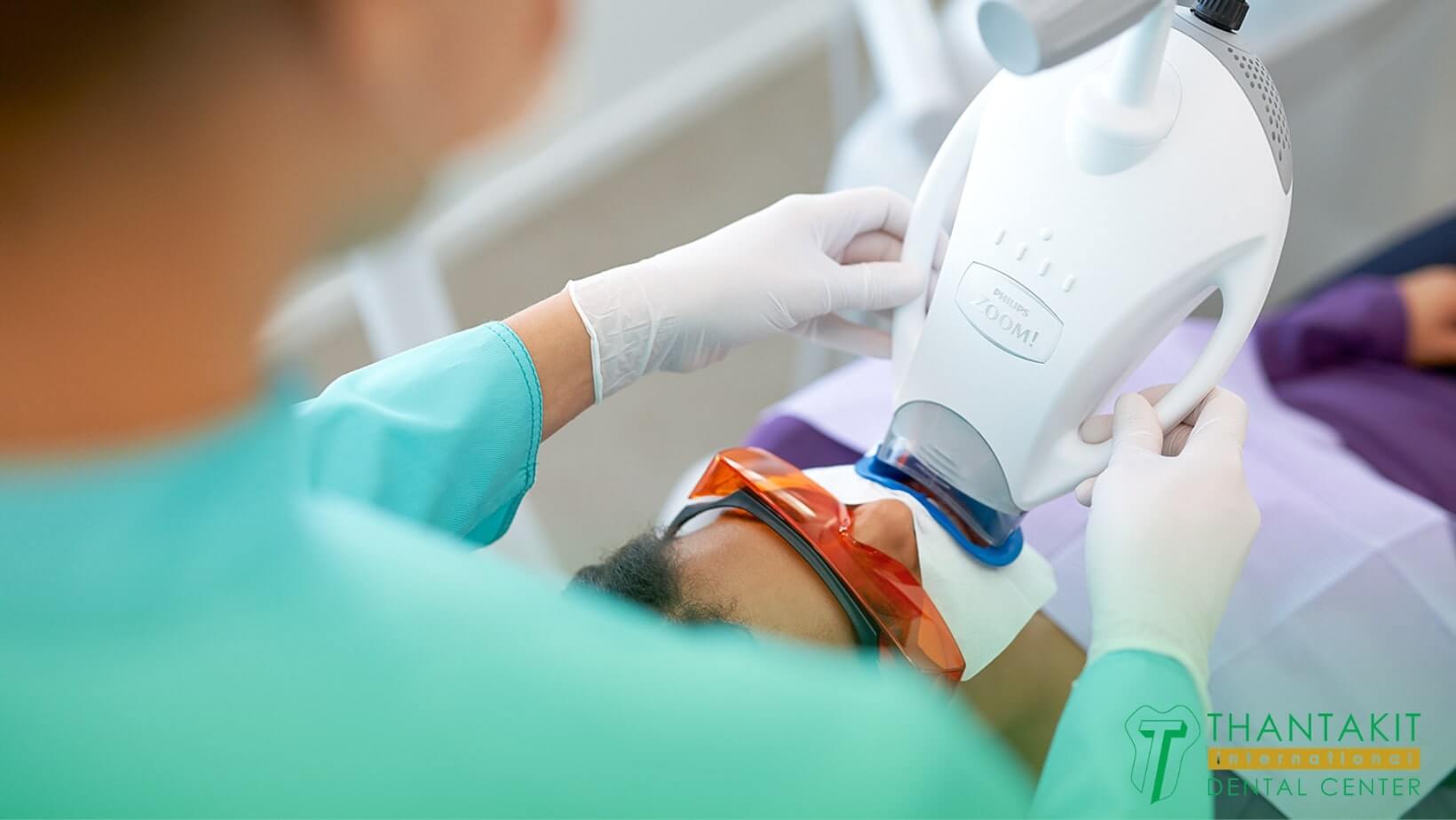
What is the Future of Digital Dentistry in Thailand?
Dental clinics in Thailand actively strive to remain at the cutting-edge of dentistry technology in order to keep appealing to tourist patients as well as to keep protecting the country’s reputation in providing a high standard of healthcare.
However, the adoption curve for advanced dental technology is less steep compared to industries such as TV, video, consumer electronics, and communications.
Nevertheless, thanks to Thailand’s bustling dental tourism industry wherein they sell affordable dental services along with tours of the beautiful Southeast Asian country, widespread adoption of new tech isn’t an issue.
Thantakit International Dental Center is Thailand’s longest established dental center. Situated in Bangkok, our clinic is renowned across the world as a destination for world-class dentistry, with most of our patients flying to us from Australia.
Please contact us today and get a FREE dental consultation.











